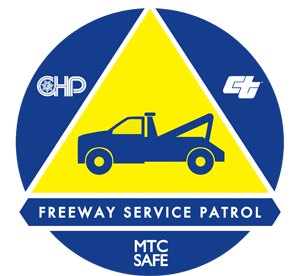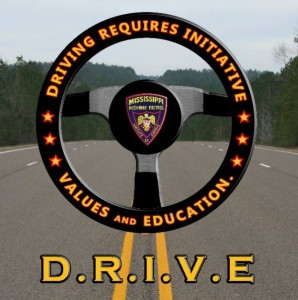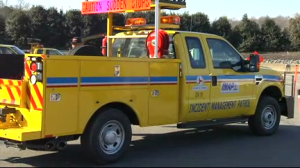News & Notes Fall 2014
NATIONAL
In July, a study focusing on the efficient use of resources and the development of systematic procedures when implementing Freeway Service Patrol programs became available to purchase online. The study, titled Analysis of Freeway Service Patrol with Discrete Event-Based Simulation, offers the following abstract:
A discrete event-based simulation model is developed to replicate the patrol process that includes districting, incident generation, response vehicle dispatching and routing, and incident clearance. Model validation proves its capability to accurately replicate the incident generation/distribution process. Later, the Interstate-95 freeway in south Florida is used as a model application example to test alternatives, and the improved alternative shows better performance compared with the previous even-length districting method and the currently used even-activity districting approach. Besides traditional roving scheme, the simulation model also has the capability to evaluate the prepositioning schemes. Furthermore, sensitivity analysis is performed to examine the impact of operational parameter settings, such as beat districting, incident detection rate, and incident frequency. Although continuous efforts are needed to develop a more comprehensive simulation model for the freeway service patrol program, the application example presented in this study reveals promising application results, and provides an insight into the patrol process as well as a better understanding of the impact of parameters on performance.
On September 20-21, 2014, the Delaware State Fire School will host the National Traffic Incident Management Train the Trainer (TtT) Course. The course is free to all qualified public safety instructors and will focus on providing consistent training in order to work toward the three objectives of the Traffic Incident Management National Unified Goal: 1) Responder Safety; 2) Safe, Quick Clearance; and 3) Prompt, Reliable, Interoperable Communications. The event will provide 11 hours of education and materials for trainers who can then train others on these same topics. For more information, visit the Emergency Responder Safety Institute’s website.
CALIFORNIA
 The Oakland Freeway Service Patrol made news in May for coming to the rescue of a kitten that was lodged in the wheel well of a black Saab stopped in nearby traffic. During morning rush hour at approximately 8:45 a.m., a motorist spotted a kitten in the center divide of the highway and when the motorist attempted to pick the kitten up, it jumped onto the wheel of the Saab. The Freeway Service Patrol quickly took action, coming to the rescue of the kitten, wrapping it in a blanket and getting it to safety.
The Oakland Freeway Service Patrol made news in May for coming to the rescue of a kitten that was lodged in the wheel well of a black Saab stopped in nearby traffic. During morning rush hour at approximately 8:45 a.m., a motorist spotted a kitten in the center divide of the highway and when the motorist attempted to pick the kitten up, it jumped onto the wheel of the Saab. The Freeway Service Patrol quickly took action, coming to the rescue of the kitten, wrapping it in a blanket and getting it to safety.
GEORGIA
On May 21, 2014, Georgia Department of Transportation (GDOT) released a Request for Proposals (RFP) seeking sponsorship support for its Highway Emergency Response Operators (HERO) and 511 programs. The RFP was the result of the 5-year term existing sponsorship contract coming to an end. The HERO Sponsorship first launched in 2009 with support from State Farm®, a long-time supporter of the traffic incident management program. The 511 Sponsorship program had previously benefited from a variety of sponsors sold by Revelation Management. While the RFP offered sponsorship opportunities for both programs, the responding agency could elect to utilize all or some of the GDOT-identified sponsorship elements. On July 10, GDOT released a Notice of Intent to Award Travelers Marketing as the sponsorship agency for its HERO and 511 programs.
FLORIDA
The Florida Department of Transportation (FDOT) First Coast Road Rangers regularly patrol highways and respond to crashes. In a recent article, a stranded motorist, Mark Ellison, expressed his positive review of the Road Rangers service, “It’s awesome…If you do have a problem, call them and they will be out there for assistance, free of charge.” The article also reiterated the Road Rangers crew’s support for the recent enforcement of the Move Over Law, which requires motorists to move over or slow down when they see first responders on the side of the roadway.

The Mississippi Highway Patrol kicked of the second year of its Drive Program. Photo courtesy of WLOX 13.
MISSISSIPPI
This summer, the Mississippi Highway Patrol kicked of their second year of the D.R.I.V.E. or Driving Requires Initiative, Values, and Education program. With the increase of travelers in the summer months, the Mississippi Highway Patrol wanted to place extra attention on seatbelt usage, impaired driving, and distracted driving. Texting and driving is a major concern for the department, but also changing the radio, checking on the baby, or even eating are all concerning distracted driving acts. The D.R.I.V.E. program’s “Pay Attention or Pay a Fine” Campaign will help MHP to crack down on any driver who is not focused on the roads.
NEW YORK
The NYSDOT HELP program lost a long-time member of its team – Paula Rodriquez, a HELP driver in the Capital District, passed away in August (not while on the job). Paula was well liked by her colleagues and anyone that she assisted:
Paula was just great. It was pouring rain, and she changed my flat tire in about three minutes. I cannot say enough good things about Paula and her expertise. Thank You to Paula for helping me on this bad weather day!
A little over a year ago, Paula offered her insight and wisdom to Safe Highway Matters as part of an article about women in the Safety Service Patrol business. From her perspective, Paula did not seem to think that being a woman in this business was anything out of the ordinary. Safe Highway Matters recognizes Paula for her contribution to the Safety Service Patrol industry and for her dedication to the job and extends its condolences to the NYSDOT HELP team.
NORTH CAROLINA

NCDOT IMAP announced a cut back to its patrol coverage areas in August and an effort to secure sponsorship funding in September.
In August, the North Carolina Department of Transportation (NCDOT) announced it will be cutting back services provided by its Incident Management Assistance Patrols (IMAP). Due to a 25% cut to NCDOT’s operations and management budget, the patrol will no longer cover Interstates 485 and 277 and it will reduce its coverage hours from 24/7 to no longer include overnight and weekends. IMAP, which originally launched in the state in 1991, will continue to cover Interstate 77 and Interstate 85.
In September, NCDOT announced it will be seeking sponsorship funding to support its transportation programs, beginning with IMAP. The DOT is currently working on an invitation for marketing firms to bid on the opportunity to secure a sponsor for the program, but NCDOT does not anticipate the sponsorship program will launch before 2016.
OHIO

Earlier this year the Ohio DOT announced its Safety Patrol would be receiving sponsorship support from State Farm®.
The Ohio Department of Transportation (ODOT) has launched a State Farm® sponsorship of its Freeway Service Patrol program. The patrol program offers roadway assistance to motorists in need. The State Farm sponsorship allows ODOT to generate additional revenue that will be used to help build some of the large transportation projects that communities both want and need. Additionally, the sponsorship allows ODOT to reduce delays and improve safety for the motoring public, without requiring additional tax dollars.
State Farm has committed to sponsor the program for a minimum of four years. The program, now known as the State Farm Safety Patrol, will not only assist motorist, but help improve traffic flow, reduce traffic congestion caused by stalled vehicles, and provide safety and comfort for stranded drivers. The State Farm Safety Patrol vehicles will be updated with highly reflective safety markings to make the vehicles more visible to motorists, especially at night. Additionally, the State Farm logo will be added to the trucks, patrol operator uniforms, as well as roadway signage.
“The State Farm Safety Patrol program underscores the State Farm commitment to auto safety and embodies our ‘good neighbor’ philosophy,” said Susan Krieger, State Farm. “We are proud to sponsor this important program. It helps people recover from the unexpected, which is the heart of the State Farm mission.”
PENNSYLVANIA

Pennsylvania Lt. Governor Jim Cawley announces the DOT’s first sponsorship effort: the State Farm Safety Patrol.
On September 9, 2014, Lt Governor Jim Cawley and Executive Deputy Secretary for Administration Brad Mallory announced the Pennsylvania Department of Transportation’s first sponsorship effort made possible by the Public-Private Partnership law Governor Tom Corbett signed in 2012.
State Farm has agreed to a three-year contract to sponsor PennDOT’s roving safety patrol that offers free motorist assistance on select expressways in the Lehigh Valley, Harrisburg, Philadelphia and Pittsburgh regions. The sponsorship will offset PennDOT’s roughly $4 million annual cost to operate the service, which is now name the State Farm Safety Patrol.
“This sponsorship is a testament to how public-private partnerships can deliver benefits for the Commonwealth and businesses, but most importantly, to taxpayers,” Cawley said. “When Governor Corbett signed the P3 law, it opened the door to continued cost savings and improved services for our customers.”
As part of the sponsorship program, existing patrol vehicles will receive an updated look including the State Farm logo and enhanced, highly-reflective safety markings to increase visibility to motorists.
TENNESSEE
 A local news station helped the Tennessee DOT Highway Emergency Response Unit (H.E.R.O.) celebrate fifteen years in service. The program first launched on July 1, 1999, in Nashville and Knoxville. HERO expanded to Chattanooga and Memphis the following year and today, the program has nearly tripled in size with more than 71 operators and 70 vehicles in service 7 days a week. Congratulations to Tennessee DOT and the H.E.R.O. program on over a decade of service.
A local news station helped the Tennessee DOT Highway Emergency Response Unit (H.E.R.O.) celebrate fifteen years in service. The program first launched on July 1, 1999, in Nashville and Knoxville. HERO expanded to Chattanooga and Memphis the following year and today, the program has nearly tripled in size with more than 71 operators and 70 vehicles in service 7 days a week. Congratulations to Tennessee DOT and the H.E.R.O. program on over a decade of service.
The Tennessee Highway Patrol (THP), along with U.S. law enforcement agencies, is lending help to the nationwide campaign to increase public education of the Move Over laws. In May, tragic stories of officer and tow truck driver deaths sparked the Tennessee Highway Patrol’s #MoveOver initiative on Twitter during National Police Week. The Twitter movement quickly spread, with numerous law enforcement agencies and state departments participating in the social media campaign. The Move Over campaign support was overwhelming with hundreds of people posting pictures of signs with #MoveOver to Twitter and Facebook. In addition to the social media movement, Tennessee Highway Patrol, Tennessee DOT (TDOT), and Tennessee Department of Safety and Homeland Security, have partnered in developing a Traffic Incident Management training facility. This is the first U.S. facility that will allow emergency responders to simulate crashes and train responders on safe techniques. Between both this training facility and the #MoveOver social movement, TDOT hopes to improve overall safety for both motorists and emergency responders.
The THP is utilizing a new tool to predict serious incidents, so the Highway Patrol can either be in place to provide assistance, or, ideally, prevent the incident from occurring in the first place. The program called “Crash Reduction Analyzing Statistical History” or C.R.A.S.H. allows analysts to enter in data relevant to the roadway system, such as weather patterns, special events, historic crash data and more. C.R.A.S.H. analyzes the data and makes predictions on traffic risks. The THP has been piloting the program for six months and C.R.A.S.H. has been accurate 72 percent of the time. While the THP admits that it is difficult to make a direct correlation between the program and a reduction in incidents, traffic fatalities are down 5.5 percent from the same time frame last year.
VIRGINIA
The Virginia Department of Transportation (VDOT) is deploying a Mobile Data Collector (MDC) system on their Safety Service Patrol vehicles. The SSP assists stranded motorists and provides traffic control during incidents, accidents, and road work. SSPs must navigate through busy roadways at peak times to respond quickly to motorists in need.
During the first phase of this project, Delcan Technologies will equip more than 170 SSP vehicles deployed throughout Virginia with configurable MDC systems. The systems will be deployed in September, and Phase 1 will be completed by the end of the year.
The MDC system uses Automated Vehicle Locator (AVL) and Global Positioning System (GPS) wireless technology to locate vehicles in real time. Intelligent reporting captures high-quality, real-time data from the vehicles, which is used to enhance operational workflow and transform transportation management. In addition, each MDC is equipped with a touch screen and camera, allowing for future upgrades to capture additional data.
